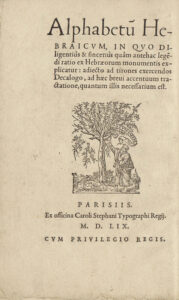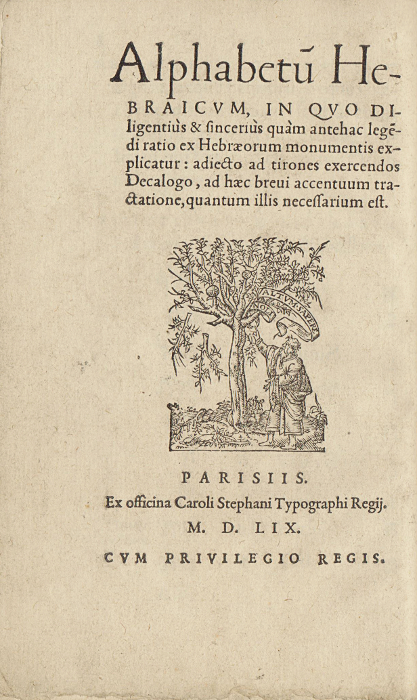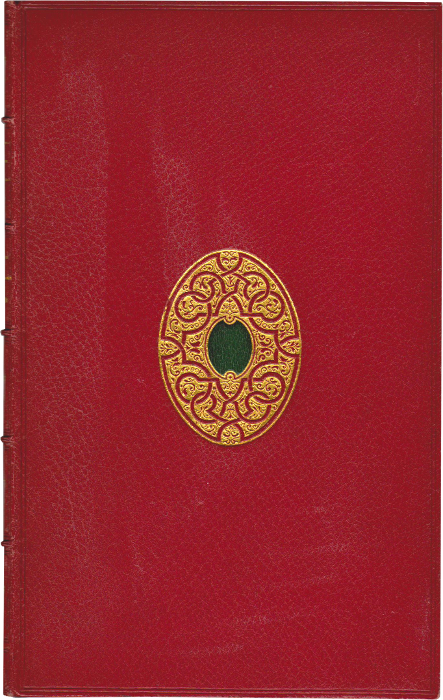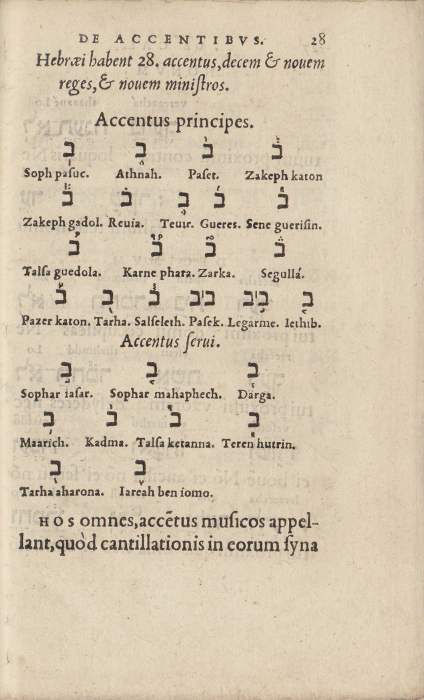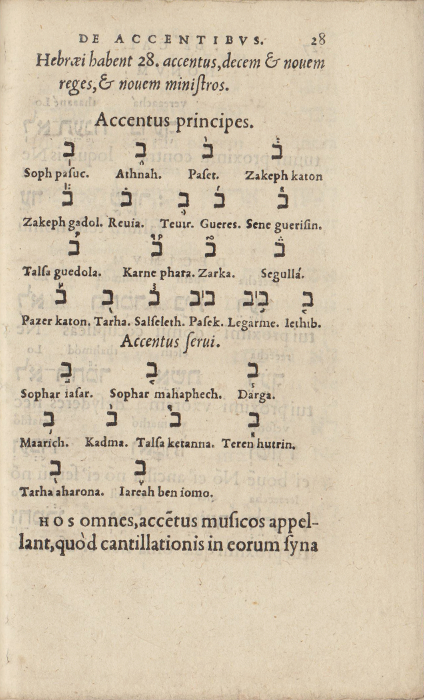Paris, Charles Estienne, 1559.
8vo [180 x 110 mm] of (1) bl.l., 32 pp. bound from right to left, (1) bl.l. Printer’s mark on the title. Bound in full red morocco, double blind-stamped fillet on the covers, green morocco medallion, spine ribbed and decorated with gilt fleurons, double gilt fillet on the edges, gilt inner border, untrimmed. Binding signed by Lortic.
Precious and rare Hebrew alphabet dedicated to the learning of reading and pronunciation of this language, beautifully printed by Charles Estienne in 1559. Adams A 793; Renouard, Estienne 112, 4.
The present alphabet is indeed the only Hebrew alphabet ever made by Charles Estienne.
“We know the various reasons that contributed to the success of Hebraic studies in the well-read Europe of the 16th century: humanist interest for classical languages and philology, search for new sources allowing a better understanding of the Old Testament, nostalgic quest of the days gone, finally fascination for the original language, expansion of the Hebraic printing appeared in 1475 that quickly spread among Christian editors, first with Alde Manuce, G. de Gourmont and the Estienne’s… […] The “alphabetum hebraicum” of 1539 is re-published in 1543, 1544, then 1550 and 1559. It is now bound from right to left. The other changes mainly concern the translation of the ‘Decalogue’. […] The modifications, even if they don’t change drastically the work, far from it, show however the great care given by the editor: the work is never re-published without being revised and corrected.” (Quelques alphabets hébraïques du XVIe siècle, Sophie Kessler-Mesguich).
The present work is therefore considered as a new version, the first one ever given by Charles Estienne, of the Hebrew alphabet.
“Charles Estienne, French printer, third son of Henri I, and brother of Robert, born in 1504, died in prison because of his debts in 1564. He had prepared himself with great medical studies and was accepted very young as a doctor. The brilliant education that he received from the paternal house made him appointed by Lazare Baïf as professor of his son Antoine. Faithful to Catholicism, in order to save the interests of his nephews of whom he was the tutor, Charles had to take to his account the direction of his brother’s press, Robert, when he withdrew himself with his family in Paris. This circumstance allowed him to show his feelings as a parent, his merit as a printer, and his science as author and editor of excellent works. Charles’s first care was to end the works started by his brother, and from 1551 was published under his name the fine princeps edition of Appianus’s Greek text, printed with the royal characters. According to Henri Estienne, it was almost finished when his father left France. The title of King’s printer was immediately conferred to Charles, and was published on the works out of his presses from 1551. We owe to Charles Estienne the publication of a large number of writings dedicated to education, and composed by him for most of them. His last printings are from 1561.” (Nouvelle biographie générale, XVI, 482-484).
In addition to the alphabet, this manual of initiation presents rules of Hebrew pronunciation as well as a text allowing the practice of reading. The booklet ends with the Ten commandments.
A fine wide-margined copy since untrimmed, of this rare Hebrew alphabet of the 16th century, elegantly bound by Lortic with inlaid morocco.
OCLC records only one copy of this alphabet among worldwide public institutions: at the Brigham Young Univ Library. In France, only the B.n.F. owns a copy.
Provenance: Firmin-Didot’s collection with ex-libris.
